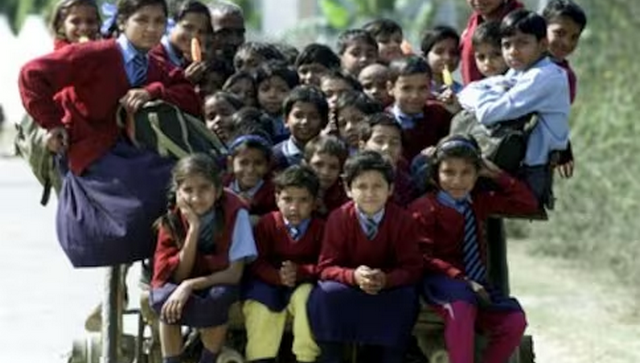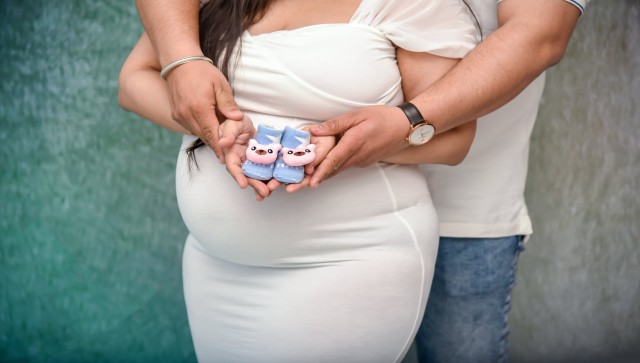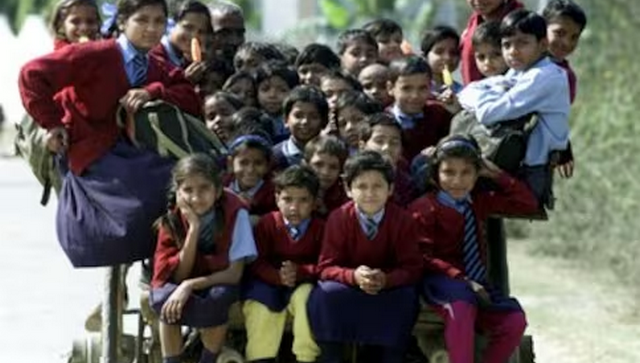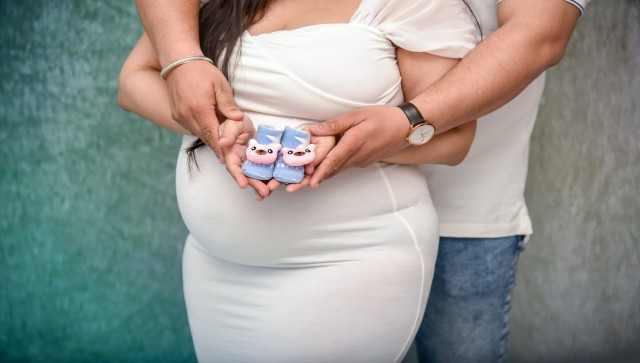By Nandini Sengupta
Editor’s Note: More and more Indian couples are going the adoption route when they choose to become parents. But many of them have to fumble in the dark trying to figure out the rules, getting ready for the baby, often without the traditional community support that accompanies a pregnancy. Journalist and adoptive parent Nandini Sengupta shares her story in the new book Babies from the Heart (Random House India). Here is an excerpt.
Parenting is and always will be an intensely personal experience. But adoptive parenting has a community side to it which is crucial too. Given that there’s no set script to follow – unlike biological parenting where your mother or grandmother can tell you exactly what to expect while you are expecting and how to handle the baby once she’s born – in adoptive families parents need to borrow cues from other adoptive parents, who’ve been there, done that and can hand-hold you through the whole maddening, exhilarating and utterly amazing journey of parenthood. Often these discussions can also clear cobwebs.
Setting up the Home for Baby
I still remember that completely crazy weekend in February when I took time out of my paper’s Budget edition preparations to shop for our baby. My husband and I drew up a list and we shared the items in an effort to do things more systematically. But with both my mother and mother-in-law stuck in Kolkata for medical reasons, we had no one to guide our frenzied shopping. Result: when baby came home, we realised we had simply bought the wrong stuff.
First-time parents do tend to go completely overboard while shopping for their baby. With so many brands and such beautiful stuff on display, it’s hard not to give in to your temptation to buy pretty frocks, colour-coordinated shoes, princess baby cots, and fancy strollers. Trouble is, a lot of that stuff may look pretty but they can be fairly useless for a small baby. Take baby Preeti’s parents Probir and Madhumita. Like us, they got barely a week between their first glimpse of the child and bringing baby home. And like us, they committed some retail faux pas. ‘When we went shopping for baby clothes, we picked up stuff that was completely unsuitable—like sweaters with hoods and jumpsuits,’ says Madhumita. Making an infant wear complicated clothing like hooded jumpers or rompers is the mother of all bad ideas. Babies don’t like being pulled and arm-twisted into fashion wear — in fact they have no sense of either fashion or wear. They burp, spit, barf, and pee constantly so it helps if you choose clothes — frocks, tees, jumpers, pants — that are easy to put on and easy to take off, preferably in instalments…
Buying baby stuff also means you need to check if products meant for cooler climates work in India. For instance, we bought tins of diaper rash cream which simply did not work on our baby. Reason: the cream was too heavy for a muggy and hot climate like ours. Finally I took my mother’s advice and switched to coconut oil. Kiki never had a problem with nappy rash again, though the zinc creams sat on our baby shelf for a full year before we threw them out.
Many of these mistakes are made by biological parents as well. But for adoptive parents, the chances of such bloopers are more likely because we get very little time to get the infrastructure up and running. Biological parents get nine months to prepare themselves and the infrastructure, and the entire extended family chips in, knowing pretty much when the baby is due.
Getting Ready for Baby, Physically and Mentally
Infrastructure is only a small part of getting ready for the baby once you’ve cleared the adoption process. The much bigger and more critical element is preparing yourself physically and psychologically for the process. Parenting isn’t easy. It can be, and often is, mentally and physically extremely taxing. Given that many adoptive parents, like us, are older and therefore physically less agile than those in their twenties, the physical strain of parenting isn’t anything to sniff away. And yes, unlike biological parents, adoptive parents don’t get nine months to prepare themselves for the baby. Typically agencies give anywhere between a week and ten days to complete the formalities and place the child in foster care once the home study and profile match are complete. So be prepared for exhaustion, confusion, a feeling of losing control, fear, anxiety — in short, the whole nine yards.
I still remember how Kiki’s first night at home was spent bawling at regular intervals of about one–two hours. I spent the entire night rocking her, giving her feeds, and cleaning her up…While going through those first couple of days of adjustment, I would often be wracked by guilt. I would wonder if the baby was crying because I didn’t know how to hold her or wasn’t doing something right. I was convinced I didn’t qualify for the job and so was doing it badly. Parenting is the only job for which you don’t have to take a test and flash a degree. But after a decade and a half of reporting and newsroom antics, I was convinced I wasn’t passing muster.
Adoptive parents do tend to go a little overboard with precautions. In a way it’s necessary because adopted children are often underweight and deprived of that biggest nutrient and immunity builder — breast milk. Also they take a while to get used to the new surroundings and sometimes even different temperatures and climate. Take baby Lily, Eron and Pritha Vaughn’s little girl. A sunny child, she quickly adapted to her new environs except in one respect. In the agency nursery, she had been confined almost entirely indoors so when she came home and was taken out to the garden, she was completely ‘blinded’ by the bright Delhi sun! It took her a while to get used to the idea of a sunny outdoors but when she did, the next step — getting used to a cold and snowy Washington DC when the couple moved — was much easier. In fact, she simply loved the snow.
Medical Records and Tests
One of the biggest complaints that adoptive parents have — and that includes us — is that the current rules in India do not make it mandatory for the agency to disclose the biological mother’s medical record. This can be a huge problem if the baby gets some infection that is dormant and does not show up in clinical examination, not to mention genetic and other disorders. Adoptive parents are typically given a basic health chart by the agency which includes HIV, TB, and a couple of other tests, along with birth weight and basic vaccines given at birth. But there’s no way of finding out, for example, if the birth mother or the extended biological family have any genetic disorders, psychological problems, inherited diseases like diabetes, asthma, or even a history of cancer. This is a huge lacuna in the process that can come up throughout the child’s lifetime as medical bolts from the blue.
Most adoptive parents face some form of medical scare — some not serious, others full blown. In our case, just a month after baby came home, she suddenly developed a form of virulent, raging pneumonia that required her to be put into neonatal ICU. The doctors tried a number of antibiotic families and wanted to know if the biological mother had TB or suffered a history of drug resistance. We had no clue. In the end, the treatment progressed through trial and error because we simply did not know whether the infection came from one of the caregivers at the agency or from the biological mother. In effect, the paediatrician and his team had to function with a medical blindfold.
That’s why it is very important to do an extensive series of tests before the baby comes home. Many parents don’t get into that because they are rushed for time and feel it’s tantamount to some kind of screening process. In reality it’s necessary because that way you’ll be prepared for any medical emergency that may come along. If you know the baby already has some congestion in the chest, the doctor can start the treatment immediately and you won’t need to wait till it blows up into an emergency…
The biggest worry that adoptive parents nurse is the fear of the unknown. Take Jayanti whose biggest fear after her adopted daughter came home was of losing her. ‘Doctors said these children come from deprived backgrounds so a lot of diseases are likely, including TB, HIV, schizophrenia, and my biggest fear was “Will I lose my baby?”’ remembers Jayanti. Like Madhumita, she too feels some degree of disclosure from the agency is critical and can save a lot of trauma both for the child as well as the parents.
Continues on the next page
Battling Institutional Care
Most adopted babies are underweight. Partly because the mother may have faced some health or nutritional problems during pregnancy and partly because institutional care, no matter how good, can never substitute for the kind of single-minded attention the baby gets at home from her parents. When Kiki came home at two and a half months, she was tiny — weighing just under 3 kg. It took us around four months to get her to plump up…
Adoptive parents need to be extremely patient with their child’s growth chart. The weight gain may not be rapid. The general growth may be slow. But as long as the baby’s metabolism is all right, there shouldn’t be anything to worry about. Rushing it could cause tummy upsets and colic pain at best — something that we faced with Kiki — and liver problems at worst. Also, many adopted kids — like their biological counterparts — are born with some kind of jaundice and in the absence of breast milk, getting them to come up to scratch isn’t easy. Typically, very small infants can shake off their institutional routine within a month or two and quickly gain weight. With older babies, that schedule is longer though they too eventually shake off their institutional baggage. My experience is that introducing solids early on is a really good idea because (a) it relieves colic pain and other tummy problems; (b) it substitutes the nutrition that the baby misses out on by not breastfeeding. I introduced solids the day Kiki turned four months old and her weight gain happened immediately afterwards.
Maternity/Paternity Leave
Can adoptive parents expect maternity or paternity leave? Our experience as well as that of a number of adoptive parents in our wider circle of friends convinced us that this issue is typically handled by different employers on a case-by-case basis. Government employees are entitled to 135 days of leave if they adopt a baby ‘upto one year of age’, as per a Government of India memorandum dated 31 March, 2006. According to this notification, adoptive mothers with ‘fewer than two surviving children’ will get 135 days of child adoption leave for adopting a baby of up to one year of age. The memorandum also says that ‘the maximum period of one year leave of the kind due and admissible (including leave not due and commuted leave upto 60 days without production of medical certificate) will be reduced by the age of the child on the date of adoption without taking into account Child Adoption Leave’. Which means if the child is two months old at the time of adoption, the mother can claim up to ten months’ leave while a six-month-old baby will fetch her mother up to six months leave and so on.
A further update issued in 2009 extended maternity leave for adoptive government servants to 180 days and offered 15-day paternity leave for adoptive fathers ‘within a period of six months from the date of adoption’.
Advocate Geeta Luthra says the Maternity Benefit Act (1961) offers umbrella benefits to all mothers but there is still no specific enactment for adoptive mothers in the private sector. ‘The government can, if it wants, introduce relevant enactments covering both public and private sector, as in the case of prevention of sexual harassment in the workplace,’ says Luthra. ‘But so far, nothing of the kind has been forthcoming.’
In most countries in the West, both maternity and parental/paternity leave for adoptive parents is mandatory. Paternity leave can extend from seven days to much longer, depending upon the country and the length of service. Hopefully, as the number of adoptive parents increase in India, both maternity and paternity leave will become mandatory in our corporate culture as well.
This excerpt has been republished from Random Reads , the in-house blog of Random House India.


)




)
)
)
)
)
)
)
)